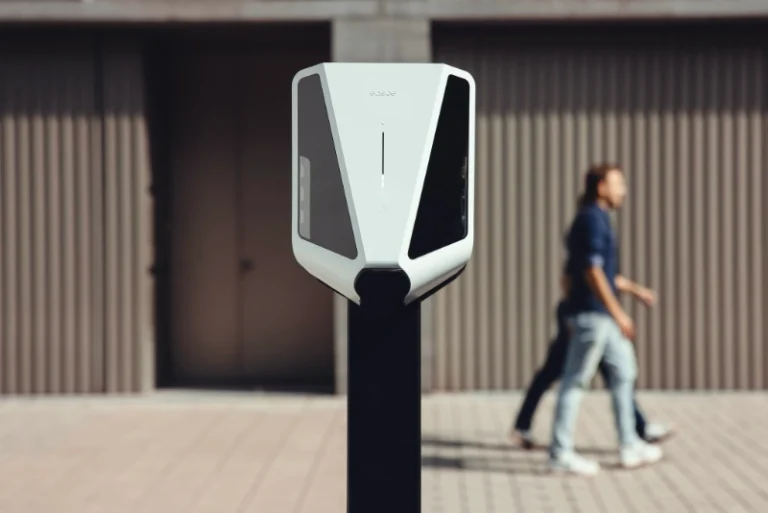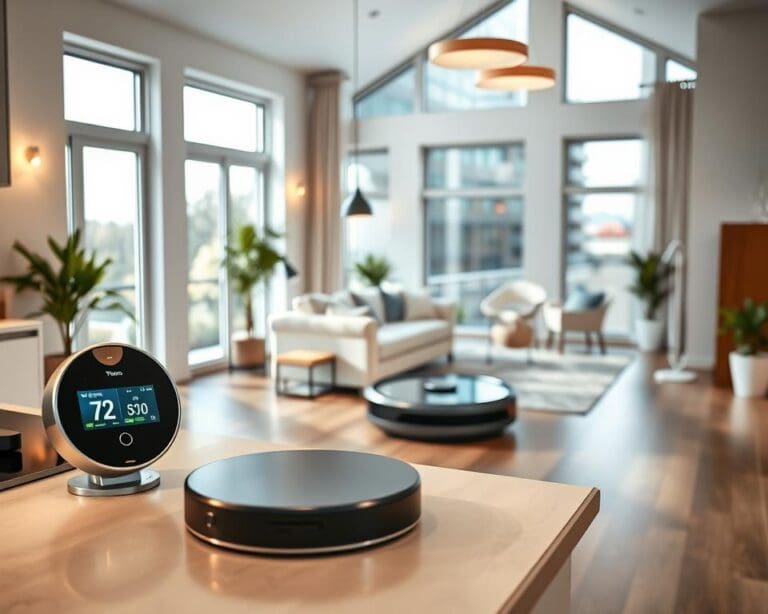In de snel evoluerende wereld van maritieme technologie zijn autonome schepen een opwindende ontwikkeling met verstrekkende gevolgen. Deze schepen, die in toenemende mate afhankelijk zijn van geavanceerde sensoren, kunstmatige intelligentie en machine learning, zijn de drijvende kracht achter een maritieme revolutie. Door traditionele navigatie te vervangen door zelfbesturende systemen, openen deze innovaties de weg naar efficiëntere, veiligere en milieuvriendelijkere scheepvaart.
De meest recente ontwikkelingen op het gebied van autonome schepen omvatten toonaangevende verbeteringen in sensortechnologie, de integratie van LiDAR en radarsystemen, geavanceerde computervisieregelingen en geautomatiseerde omgevingsmonitoring. Deze technologische vooruitgang stelt schepen in staat om hun omgeving met ongekende precisie waar te nemen, waardoor ze volledig autonoom kunnen navigeren zonder menselijke interventie.
Bovendien speelt kunstmatige intelligentie en machine learning een cruciale rol bij het vergemakkelijken van maritieme navigatie. Deze krachtige tools stellen schepen in staat om complexe beslissingen te nemen, veilige routes te plannen en obstakels te vermijden, waardoor de algehele efficiëntie van het vervoer over zee aanzienlijk wordt verbeterd.
Key Takeaways:
- Autonome schepen revolutioneren de maritieme industrie door traditionale navigatie te vervangen met geavanceerde, zelfbesturende systemen.
- Innovaties in sensorentechnologie, zoals LiDAR en radar, stellen schepen in staat hun omgeving nauwkeurig waar te nemen en volledig autonoom te navigeren.
- Kunstmatige intelligentie en machine learning spelen een cruciale rol bij het faciliteren van complexe besluitvorming en veilige routeplanning voor autonome schepen.
- Deze technologische vooruitgang leidt tot efficiëntere, veiligere en milieuvriendelijkere scheepvaart.
- De toekomst van autonome schepen belooft een transformatie van de maritieme industrie, met verregaande gevolgen voor logistiek, handel en duurzaamheid.
The Evolution of Autonomous Ships: A Maritime Revolution
In the ever-evolving world of maritime transportation, the rise of autonomous ships has paved the way for a new era of efficiency and innovation. The journey from traditional navigation methods to AI-powered systems has been a remarkable transformation, marked by key milestones that have shaped the future of the industry.
From Traditional Navigation to AI-Powered Systems
The maritime industry has long relied on time-honored navigation techniques, such as the use of compasses, charts, and celestial observations. However, the advent of Global Positioning System (GPS) technology has revolutionized the way ships navigate. Electronic charts, integrated with GPS data, have provided captains and crews with unprecedented precision and real-time positioning information, enhancing their ability to steer vessels safely and efficiently.
Key Milestones in Maritime Automation
The evolution of autonomous ships has been a gradual process, with several pivotal advancements that have paved the way for the industry’s transformation. The integration of advanced control systems, including sophisticated sensors and algorithms, has enabled ships to operate with greater autonomy, reducing the reliance on human intervention. These technological breakthroughs have been instrumental in advancing the concept of zelfvarende schepen (autonomous ships) and autonoom varen (autonomous navigation).
| Year | Milestone | Impact |
|---|---|---|
| 1999 | Introduction of the Automatic Identification System (AIS) | Improved vessel tracking and collision avoidance |
| 2005 | Development of advanced ship control systems | Increased vessel maneuverability and scheepsautomatisering (ship automation) |
| 2013 | Emergence of unmanned surface vessels (USVs) | Paved the way for fully autonomous ship operations |
These milestones have not only transformed the way ships are navigated but have also laid the groundwork for the continued evolution of zelfvarende schepen (autonomous ships) and the future of maritime transportation.
Advanced Sensor Technologies in Modern Ships
As the maritime industry continues to embrace the era of automation, the integration of cutting-edge sensor technologies has become crucial for the safe and efficient operation of modern autonomous ships. From LiDAR and radar systems to computer vision and environmental monitoring, these advanced sensors are revolutionizing the way ships navigate and respond to their surroundings.
LiDAR and Radar Integration
LiDAR (Light Detection and Ranging) and radar systems have become essential components in the navigation of autonomous vessels. These technologies work in tandem, providing a comprehensive understanding of the ship’s immediate environment. LiDAR’s precise 3D mapping capabilities, combined with radar’s ability to detect and track moving objects, enable autonomous ships to navigate complex waterways with exceptional accuracy and safety.
Computer Vision Systems
The integration of computer vision systems in modern ships has significantly enhanced their situational awareness. These advanced systems, powered by artificial intelligence and machine learning, can identify and classify objects, obstacles, and even other vessels in real-time. This visual information is then seamlessly integrated with the ship’s navigation and control systems, allowing for swift and appropriate responses to potential hazards.
Environmental Monitoring Sensors
Autonomous ships are also equipped with a range of environmental monitoring sensors that provide critical data on factors such as weather conditions, water quality, and marine life. This information is vital for optimizing voyage planning, ensuring the safety of the vessel and its crew, and minimizing the environmental impact of maritime operations. By monitoring these factors, autonomous ships can navigate more efficiently and reduce their carbon footprint.
The synergistic integration of these advanced sensor technologies is a testament to the rapid progress in maritieme technologie and the development of autonome systemen voor schepen. As the maritime industry continues to embrace automation, these cutting-edge sensor solutions will undoubtedly play a pivotal role in shaping the future of autonomous shipping.
Artificial Intelligence and Machine Learning in Maritime Navigation
In the rapidly evolving world of maritime automation, the role of artificial intelligence (AI) and machine learning (ML) has become increasingly pivotal. These advanced technologies are transforming the way autonomous AI navigation systems and scheepsrobots navigate the open seas, revolutionizing the future of innovaties in scheepsautomatisering.
At the heart of this technological revolution lies the seamless integration of sensor data processing and real-time decision-making. AI algorithms analyze a vast array of inputs, including GPS coordinates, weather patterns, and even the behavior of surrounding vessels, to plot the most efficient and safest course of action. By continuously learning from these data streams, the navigation systems continuously refine their decision-making capabilities, optimizing routes and anticipating potential obstacles with unparalleled precision.
Navigating the Future with AI
The integration of AI and ML in maritime navigation has paved the way for a new era of autonomous shipping. These advanced systems are capable of:
- Autonomous route planning and course adjustments based on real-time data
- Seamless coordination with port authorities and other vessels through advanced communication protocols
- Continuously adapting to changing environmental conditions and dynamic scenarios
- Optimizing fuel efficiency and reducing emissions through intelligent route optimization
| Key AI Capabilities in Maritime Navigation | Benefits |
|---|---|
| Predictive analytics and decision-making | Improved safety, efficiency, and responsiveness |
| Automated collision avoidance systems | Enhanced safety and reduced risk of accidents |
| Intelligent fleet management and coordination | Optimized resource utilization and reduced operating costs |
As the maritime industry continues to embrace the power of AI and ML, the future of autonomous shipping is poised to redefine the way we move goods and resources across the world’s oceans. The seamless integration of these technologies promises a new era of unparalleled efficiency, safety, and environmental sustainability in the maritime sector.
Remote Control Systems and Digital Twins
The maritime industry is undergoing a transformative shift towards onbemande scheepvaart, or autonomous shipping. At the heart of this revolution are advanced remote control systems and cutting-edge digital twin technology, which are revolutionizing how vessels are monitored and controlled.
Command Centers for Autonomous Vessels
Shore-based command centers now play a crucial role in the remote control capabilities of modern ships. These centralized hubs allow experts to monitor and manage autonomous vessels in real-time, ensuring safe and efficient operations. From navigational decisions to machinery diagnostics, command centers provide a comprehensive overview of the ship’s status, enabling seamless remote control and intervention when necessary.
Real-time Monitoring and Control
Complementing the command centers are digital twin technologies, which create virtual replicas of physical vessels. These digital twins provide a detailed, real-time representation of the ship’s performance, allowing shore-based teams to anticipate and respond to potential issues. By leveraging predictive analytics and machine learning, digital twins enable proactive maintenance, optimized route planning, and enhanced safety protocols, further advancing the capabilities of onbemande scheepvaart.
| Feature | Benefit |
|---|---|
| Remote Monitoring | Comprehensive oversight of vessel operations from shore-based command centers |
| Digital Twins | Real-time visualization and predictive maintenance for autonomous ships |
| Automated Decision-Making | Optimized navigation and operations through AI-powered systems |
As the maritime industry continues to embrace onbemande scheepvaart, these remote control capabilities and digital twin technologies are poised to redefine the future of autonomous shipping, ensuring safer, more efficient, and sustainable maritime operations.
Safety Features and Collision Avoidance Technologies
As the maritime industry embraces the autonomous revolution, safety has become a paramount concern. Autonomous ships are equipped with cutting-edge collision avoidance systems, designed to navigate the open seas with unparalleled precision and vigilance.
At the heart of these advanced safety features are sophisticated sensor technologies, such as LiDAR and radar, which work in tandem to detect and track potential obstacles in real-time. These systems utilize computer vision and predictive algorithms to analyze the surrounding environment, anticipate potential collisions, and initiate appropriate evasive maneuvers.
Furthermore, autonomous ships are outfitted with robust emergency response protocols, ensuring that in the event of an unforeseen incident, the vessel can autonomously take the necessary actions to safeguard both the crew and the cargo. This includes the ability to automatically send distress signals, initiate emergency braking, and coordinate with maritime authorities for a swift and effective response.
By integrating these advanced maritime safety and collision avoidance systems, autonomous ships are poised to revolutionize the shipping industry, offering unparalleled levels of safety and reliability in the face of unpredictable maritime conditions.
| Key Safety Feature | Description |
|---|---|
| LiDAR and Radar Integration | Advanced sensor systems that provide precise 3D mapping and object detection for enhanced situational awareness. |
| Computer Vision Systems | Sophisticated algorithms that analyze real-time visual data to identify and track potential obstacles, enabling proactive collision avoidance. |
| Emergency Response Protocols | Automated systems that can initiate emergency procedures, such as distress signaling and autonomous braking, to safeguard the vessel and its cargo. |
Environmental Benefits of Autonomous Shipping
As the maritime industry embraces the era of autonomous shipping, the potential environmental benefits become increasingly evident. The integration of eco-friendly technologies and sustainable shipping practices is transforming the way we approach maritime transportation, paving the way for a greener future.
Reduced Carbon Footprint
One of the primary advantages of autonomous shipping is its ability to optimize vessel operations and streamline logistical processes. By leveraging advanced sensor technologies, AI-powered navigation, and real-time data analysis, autonomous ships can navigate more efficiently, reduce fuel consumption, and minimize greenhouse gas emissions.
- Precise route planning and dynamic adjustments to weather conditions and currents can significantly lower the overall carbon footprint of maritime transportation.
- Autonomous systems can continuously monitor and adjust engine performance, propulsion systems, and energy management to enhance fuel efficiency.
- The elimination of unnecessary human-driven maneuvers, such as excessive idling or inefficient maneuvering, further contributes to the reduction of carbon emissions.
Optimized Route Planning
Autonomous shipping technologies enable advanced route optimization, which not only enhances efficiency but also supports sustainable shipping practices. By analyzing vast amounts of data, including weather patterns, ocean currents, and traffic conditions, autonomous systems can identify the most eco-friendly and fuel-efficient routes for vessels.
| Metric | Traditional Shipping | Autonomous Shipping |
|---|---|---|
| Fuel Consumption | Higher | Lower |
| Carbon Emissions | Higher | Lower |
| Voyage Time | Variable | Optimized |
By adopting these eco-friendly technologies and sustainable shipping practices, autonomous vessels can play a significant role in reducing the environmental impact of the maritime industry and contributing to a more sustainable future.
Economic Impact and Cost Efficiency
The advent of autonomous ships has profound implications for the maritime economics sector, promising significant cost savings and enhanced efficiency. By embracing this maritime revolution, the shipping industry is poised to reap substantial benefits in the long run.
One of the primary drivers of cost-effective shipping is the reduction in crew expenses. Autonomous vessels eliminate the need for large onboard crews, allowing for substantial savings in wages, benefits, and associated logistical costs. This, in turn, translates to lower operating expenses and a more efficient use of resources.
Furthermore, autonomous ships demonstrate remarkable fuel efficiency through optimized route planning and real-time monitoring of environmental conditions. By minimizing fuel consumption and emissions, shipping companies can achieve substantial cost savings while also contributing to a greener maritime ecosystem.
The integration of advanced sensor technologies and AI-powered systems in modern autonomous ships also reduces the need for costly maintenance interventions. Predictive analytics and digital twin simulations enable proactive maintenance, ensuring that vessels operate at peak performance and avoiding unexpected downtime.
“Autonomous shipping has the potential to revolutionize the maritime economics landscape, unlocking new levels of cost-effectiveness and industry-wide transformation.”
The long-term economic implications of autonomous shipping extend beyond the shipping industry itself. By streamlining global trade logistics and enhancing the reliability and speed of maritime transportation, autonomous vessels can positively impact international commerce, ultimately contributing to the growth and prosperity of the global economy.
As the maritime sector continues to embrace technological advancements, the economic benefits of autonomous shipping are poised to become increasingly evident, solidifying its position as a cost-effective and sustainable solution for the future of the industry.
Future Prospects and Upcoming Developments
As the maritime industry continues to embrace the transformative power of autonomous technology, the future prospects for autonomous ships are nothing short of remarkable. Experts foresee the emergence of fully autonomous, ocean-going vessels capable of navigating the high seas without human intervention, a testament to the rapid advancements in artificial intelligence, sensor integration, and digital twin technology.
One of the most anticipated developments in the coming years is the integration of advanced predictive analytics and machine learning algorithms, enabling autonomous ships to anticipate and respond to environmental changes, optimize routes, and enhance overall efficiency. Additionally, the continued refinement of computer vision systems and sensor fusion will further bolster the safety and reliability of these autonomous vessels, ensuring they can navigate complex waterways with precision and agility.
The future of maritime transportation also holds the promise of smart ports and harbors, seamlessly interacting with autonomous ships to streamline cargo operations, reduce energy consumption, and enhance supply chain resilience. As the industry embraces the principles of Industry 4.0, the convergence of automation, data analytics, and sustainable practices will redefine the landscape of global maritime trade, ushering in a new era of efficiency, safety, and environmental stewardship.








